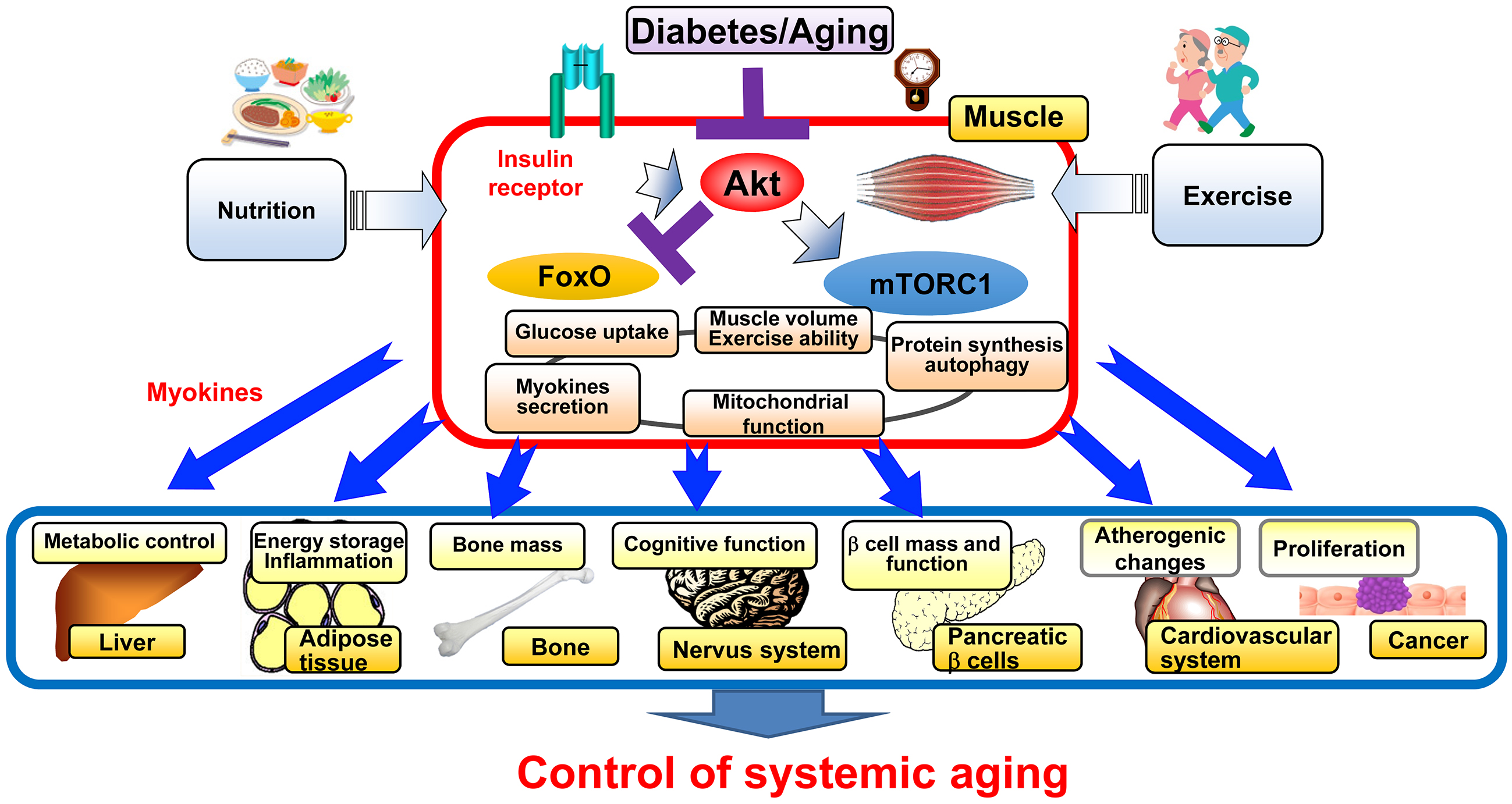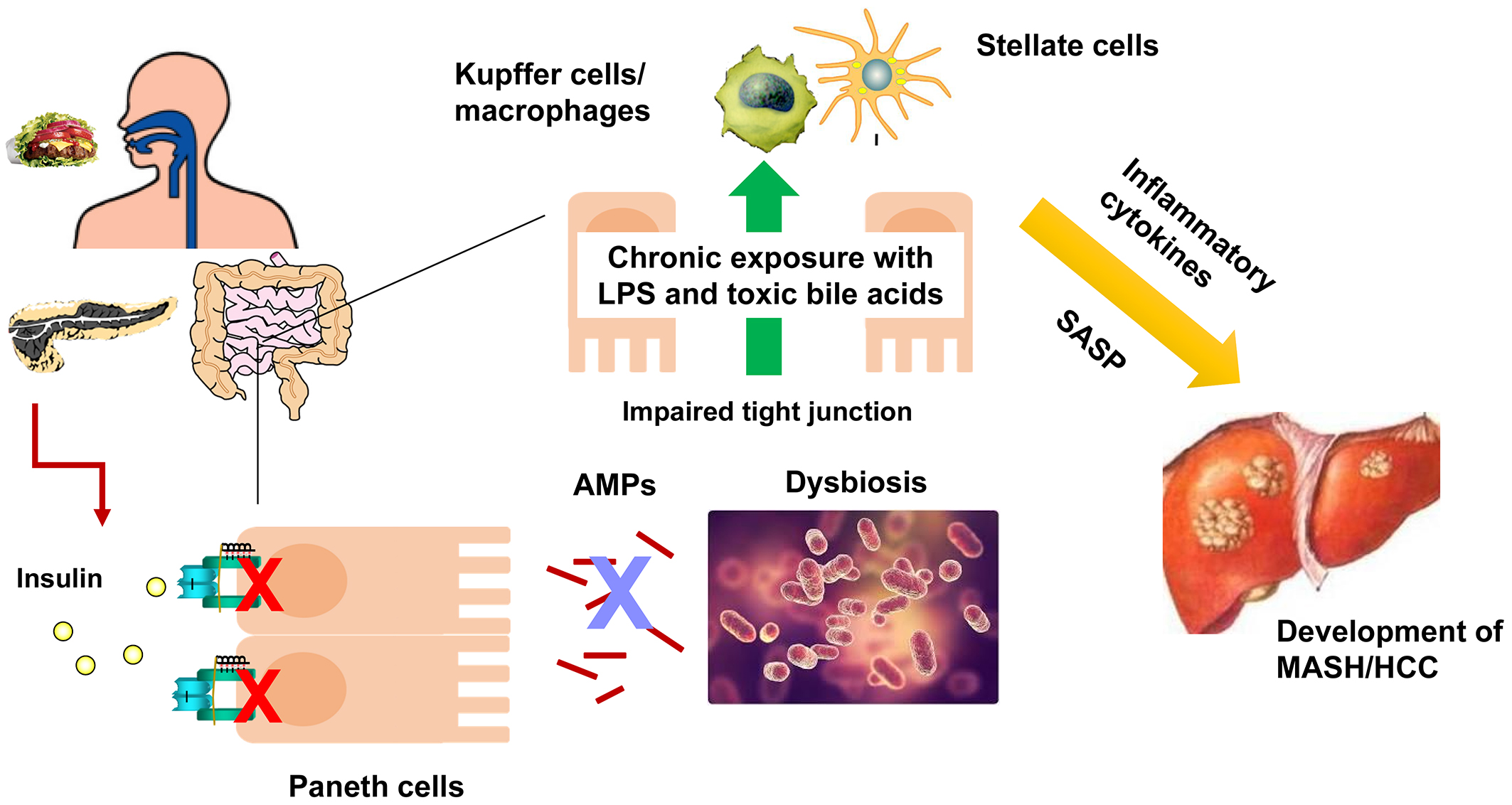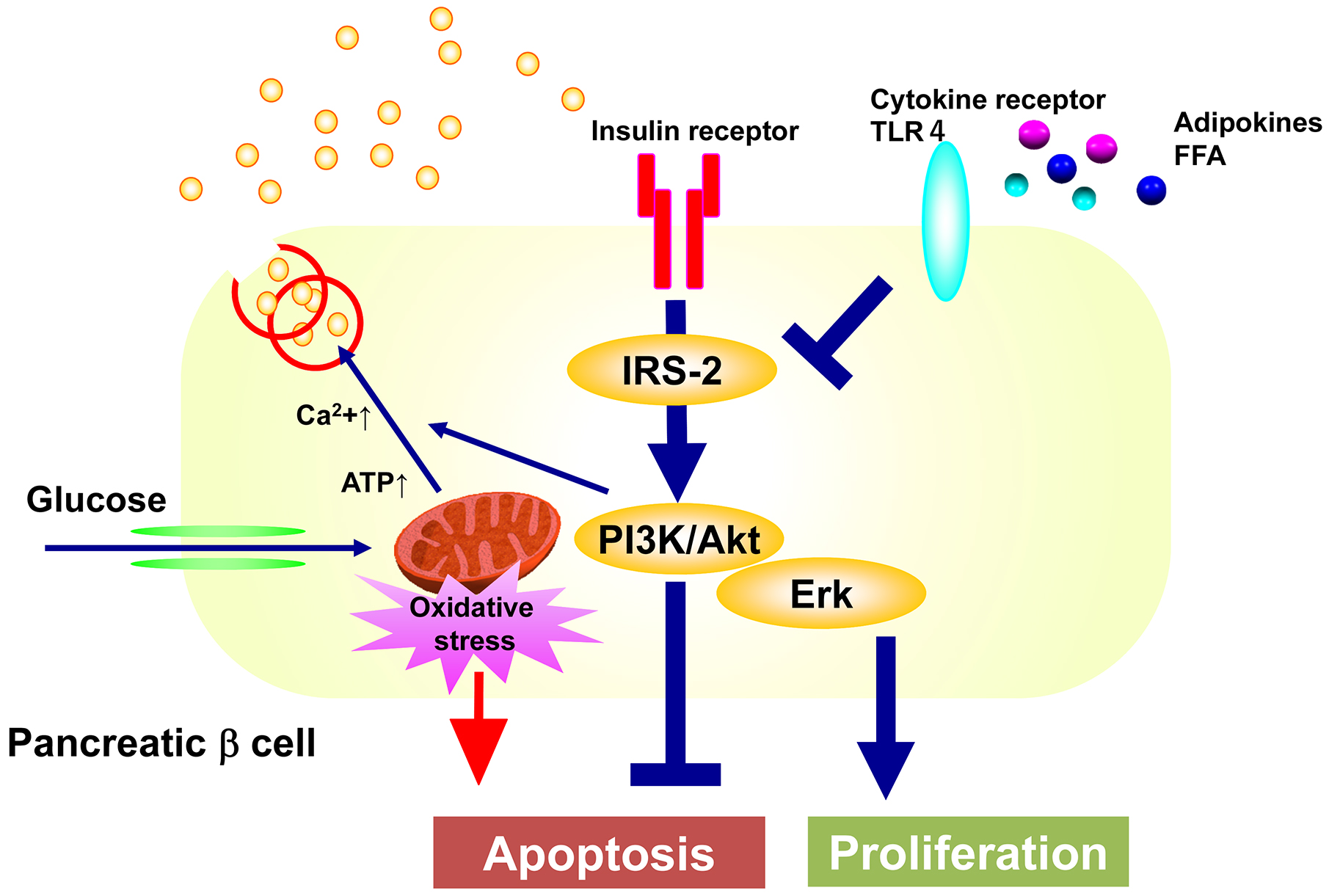Figure 3. Roles of insulin action in the regulation of systemic aging through controlling skeletal muscle quantity and quality
Insulin action controls muscle volume by regulating mitochondrial quantity and quality in the skeletal muscle. In diabetes, impaired insulin action in the skeletal muscle leads to sarcopenia and presumably alters production of myokines, which promote aging-related disease and systemic aging.
From: Rethinking Diabetes from the Perspective of Diverse Insulin Actions in Various Organs

Figure 4. Roles of insulin action in the prevention of MASH and its related liver cancer through controlling gut barrier function
In diabetes, production of antimicrobial peptides (AMPs) regulated by insulin action in Paneth cells is impaired, leading to dysbiosis and subsequent chronic exposure of LPS and toxic bile acids to Kupffer and stellate cells. These cells then secrete inflammatory cytokines and senescence-associated secretory phenotype, which promote carcinogenesis in the liver.
From: Rethinking Diabetes from the Perspective of Diverse Insulin Actions in Various Organs




